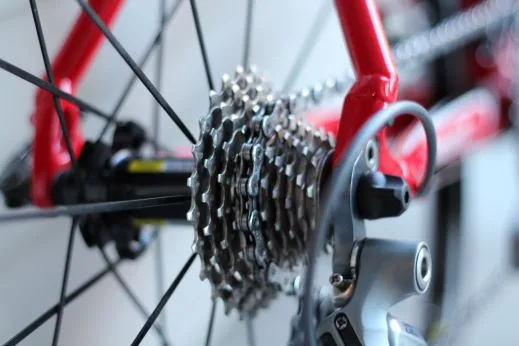A basic description of bicycle components may be necessary for newcomers looking to fully understand the parts and terminology within the hobby. Bikes are essentially a marvel of engineering simplicity, consisting of several essential components that work in harmony to provide a versatile and fun mode of transportation. From the frame to the wheels, each part plays a crucial role in the bike’s functionality.
Frame
The frame is the backbone of the bicycle, connecting all other components. Typically made from materials like aluminum, steel, or carbon fiber (the most expensive material), the frame provides structural integrity while also determining the bike’s overall geometry. The top tube, down tube, seat tube, and chainstays collectively form the frame, and their dimensions affect the bike’s size, stability, and handling.
Wheels
Mounted on the frame, the wheels are obviously fundamental to a bicycle’s movement. Comprising a hub, spokes, and a rim, the wheels support the tires and enable smooth rotation. The hub contains bearings that allow the wheel to spin on the axle, while the spokes connect the hub to the rim, providing stability. The rim supports the tire and influences the bike’s overall performance, especially in terms of weight and aerodynamics.
Tires
The tires are critical for a bicycle’s grip and ride quality. They come in various sizes, tread patterns, and materials, depending on the intended use. Road bikes typically have narrow, smooth tires for speed and reduced rolling resistance, while mountain bikes have wider, knobby tires for better traction on uneven terrain. Hybrid bikes, as expected, fall in between road and mountain bikes in terms of tire width. The inner tubes inside the tires hold the air that gives them their shape and firmness. Today, cyclists have the option of “tubeless” setups that are more resistant to puncture (but in my experience can also be frustrating to set up). The cost of tires can vary but we’ve looked at bike tire cost in detail in another post, I recommend checking it out.
Drivetrain
The drivetrain, comprising the pedals, crankset, chain, and gears, is responsible for propelling the bike forward. When the rider pedals, the chain transfers the energy to the rear wheel, causing it to turn. The number of gears, controlled by shifters on the handlebars, allows the rider to adjust resistance and speed. The pedals, often equipped with toe clips or cleats, provide a secure connection between the rider’s feet and the bike.
Handlebars
The handlebars and stem dictate the rider’s posture and control over the bicycle. The stem connects the handlebars to the fork and frame, while the handlebars come in various shapes, such as drop bars for road bikes and flat or riser bars for mountain bikes. Brake levers attached to the handlebars control the braking system, which can be either rim or disc brakes, depending on the bike type and rider preference.
Saddle
Finally, the saddle and seatpost contribute to rider comfort. The seatpost connects the saddle to the frame, allowing for height adjustment, while the saddle provides a supportive surface for the rider. Comfort is of course subjective, and different riders may prefer different saddle shapes and materials.
Brakes
One of the more critical components, the brakes obviously help bring the bike to a stop. Bikes typically have one of two brake types these days, Disc vs. Caliper, which we’ve delved into the details of in a separate post. Cleaning and maintaining the brakes is of course one of the most important maintenance tasks.
Conclusion
Bikes are fine tuned machines with components that work together to provide an efficient and enjoyable means of transportation. Each part, from the frame to the saddle, contributes to the functionality and performance of this efficient, affordable, and FUN contraption. Hopefully this basic description of bicycle components has provided a useful brief! On the more academic topic of bike terminology, see our post on bike vs. bicycle, the distinction is more interesting than you might think at first!


